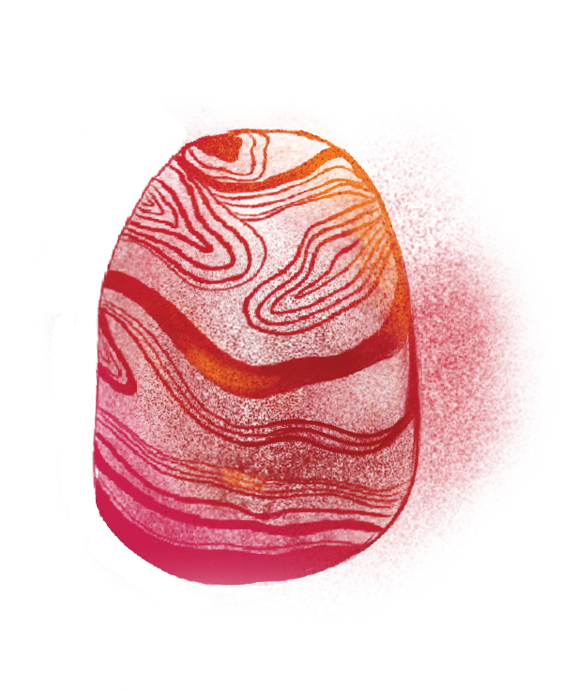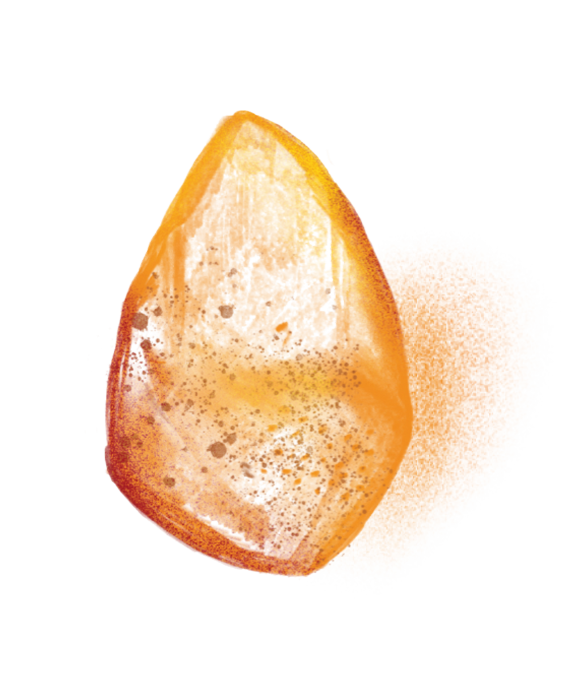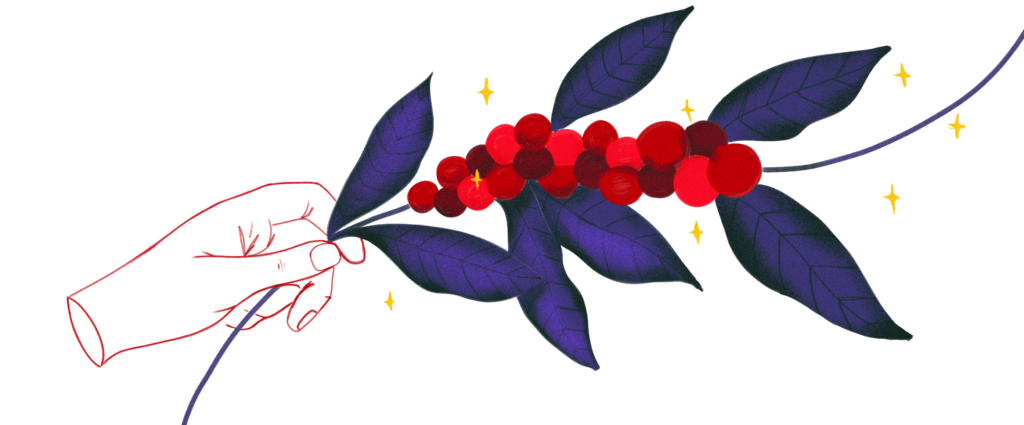The carbonic maceration process uses cherries that are picked perfectly ripe, are hand-sorted, and floated to remove over-ripe and under-ripe cherries. The washed CM Selections coffees (CMW) are pulped before being placed in temperature and humidity-controlled tanks flushed with carbon dioxide (CO2) to remove all oxygen (O2) from the tank. After fermentation, the coffee is dried on raised beds for 12-18 days before being stored and milled. Our natural CM Selections (CMN) are placed in the tanks still in whole cherries. After fermentation, the natural coffee is dried on raised beds for 30 days or more before being stored and milled. It is this time in controlled tanks filled with CO2 that creates the CM Selections profiles.

Cherries are hand-picked based on ripeness and colour to ensure an even quality of coffee.
Coffee is placed in sealed tanks filled with CO2 and void of O2. This creates a controllable anaerobic fermentation environment. The gemstone profiles can be crafted through variables including tank temperature, fermentation time, batch size, tank materials and more.
Cherries are hand sorted to further increase the overall quality of the harvest. Selected cherries go towards our CM fermentation process and the remaining cherries go towards a different lot.
For the washed and honey methods, the coffee is pulped to remove the skin and various amounts of mucilage. During this process, cherries are also floated to separate low density cherries for further quality control.
Our CM Selections range is categorised by five coloured gemstones. Each of these gemstones represent a spectrum of colours that reflect the most prominent flavours and profiles we experience in coffee.





At Project Origin, our intention is to simplify the coffee tasting experience and remove complexities and biases from our approach. Tasting and cupping should be approachable yet enjoyable, and it should guide you to see deeper into the world of possibilities for specialty coffee. We should be able to appreciate the final experience.
To help us approach and enjoy the coffee cupping and tasting of CM processed coffees, we have launched the CM Selections Flavour Spectrum.


We asked six world coffee champions to taste thirty different CM Selections coffees and share their thoughts on how they can be used for a variety of scenarios that are common in our industry. Our CM Champion’s Selections article dives into the world of carbonic maceration: what it is, how it is crafted, the impacts it has on our industry, and how the different profiles can be used in a variety of situations. Our champions have opened their minds to you, and we are here to present them.
CM stands for carbonic maceration and it is a method of processing coffee beans. Carbonic maceration techniques are steps that are added to traditional processing methods in order to enhance or craft cup profiles in coffee. This crafting is done by controlling specific yeasts during the fermentation stages of coffee processing, and when we perfect this stage, we discover a new range of profiles from the same coffees with which we are already familiar.
‘CM’ stands for carbonic maceration. ‘CM Selections’ refers to the selection of coffees we offer that are processed using our Project Origin carbonic maceration techniques.
Not entirely. The carbonic maceration techniques are used in addition to the traditional processing techniques as a way of enhancing specific attributes within a coffee. The use of carbonic maceration techniques for fermentation has been used in the wine industry for decades, and now we add it to our traditional coffee processing methods (washed, natural and honey) to enhance the flavour profiles. In carbonic maceration, we have greater control over the yeasts that are active through the fermentation stage, which results in specific flavours and body profiles.
CM techniques highlight specific cup and flavour profiles in coffee in the same way traditional processing methods highlight specific cup and flavour profiles. A washed coffee tends to feature certain attributes, such as cup clarity, high acidity and a clean cup. A natural coffee tends to feature higher sweetness, heavier body and sometimes fermented flavours. The CM techniques work to highlight various attributes in the same way.
When coffee is processed, the natural yeasts and bacterias eat and break down the sugars inside the coffee cherry, initiating fermentation. The style of processing we choose – natural, honey, washed – will determine how long that fermentation stage will last. The fermentation stage is important in coffee processing, as it heavily influences the way the coffee beans develop flavour and acidity profiles. The body is also established during the fermentation and drying stages.
The goal behind adding in the carbonic maceration techniques to the coffee processing is to direct the right yeasts in the right environments to intensify specific flavours and attributes in the coffee. Carbonic maceration helps influence which yeasts are given the optimal conditions to survive and so have more impact on the fermentation and resulting flavour characteristics of the green beans. The carbonic maceration stage puts the coffee beans, with (natural) or without (washed) the cherry attached, in a sealed tank that is flushed with carbon dioxide and void of oxygen. In this environment, carbon dioxide is used by the yeasts to help break down the sugars in and around the coffee beans in a natural process.
Where the carbonic maceration techniques are most helpful for producers is in converting what would be an average lot into a specialty lot. This enables them to create a product that is of a higher quality and therefore they can sell it at a higher price.
The CM processing techniques provide a platform for producers to have more control over the process itself and as a result provide more certainty in what outcome or quality level may be achieved. By sharing the knowledge and experience Project Origin has developed, we can adjust the appropriate variables required for successful CM processing with the producers in order to replicate flavour and cup profiles for a steady stream of beans each harvest for the consumers, but also to allow a steady income for producers through such a reliable product.
On the contrary, in most cases, Project Origin pays for all of the equipment used to establish CM processing at a farm or washing station. Project Origin also guarantees the price that will be paid to producers for coffees that are processed using our techniques regardless of the final cup quality. We do this for all producers and washing stations that are part of the CM Selections program. The producer or washing station bears none of the risks for creating coffee through Project Origin’s CM Selections program, but they do get the security of an agreed fixed price that is set at a premium above their normal sale price.
Our CM Selections range has the capacity to broaden our understanding and experience of coffee. We believe it deserves its own categorisation system so that we can approach these coffees without the inevitable predetermined bias we subconsciously build when referring to cupping scores.
As an alternative, we categorise our CM Selections range into five gemstones that represent flavour profiles. The gemstones are Indigo, Jasper, Amber, Diamond and Opal. To understand more about the gemstone range, you can read our CM Champion’s Selections article here.
We acknowledge the Traditional Owners of the land on which we work, the Ngunnawal people. We pay our respects to elders past, present and emerging.
